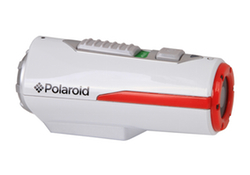How To Reduce Noise of Woodworking Planer?

There are many types of woodworking planers, mainly flat planers, single-sided press planers, and multi-sided press planers. However, the mechanism of noise generated by the planer for woodworking is basically the same. They are all caused by the high-speed rotating helicopter blades as the blades ‘cut’ through air trapped at the work surface as the blades pass by, so the noise reduction methods are similar. There are several options available for companies to reduce harmful noise levels without impeding production efficiency.
The most effective ways for reducing noise are below:
- Change to the spiral cutter head instead of straight cutters. Spiral cutter head replacement can make a big difference. The most common type of cutter head for planers and molders incorporates straight blades mounted perpendicular to the rotating block at various cutting angles. During cutting, the straight blade configuration requires additional energy to cut the material, also creating more noise. Helical cutter heads distribute the cutting surface to minimize the surface contact between the blade and the material at any one time. This provides significant noise reduction (10 dB or more) when compared to straight cutters. This also requires less feeding force and produces smoother finishes.
- Adjust the static balance and dynamic balance of the spiral knife cutter block. When balancing, not only the cutter head body must be balanced, but also the blades, cutter block, knife adjustment devices, and pin screws must be considered. We also should consider the balance of the pulley that rotates with the knife shaft at high speed, which means that all parts on the helical cutter head must be assembled before balancing. When the blade is dull, weigh it to avoid sharpening the knife. Sometimes the blades are worn more or less, which may cause new imbalances. By the way, UKO will do the dynamic balance of all cutter head before leaving the factory.
- The shaving guide device under the front edge of the worktable makes the front edge of the worktable into a comb tooth shape, and mills a muffler groove on the rear cover of the cutter head. The use of a closed cutter head and the opening of the muffler groove on the rear cutting board can reduce the agitation of the cutter head to the air during high-speed rotation, thus reducing noise; opening the muffler groove on the rear cutting board can reduce noise 2-3 dB(A).
- Damping and sound-absorbing pulley housing. The pulley housing of the wood planer is a large sound radiating surface, so it must be modified. Commonly used damping materials include asbestos wool, and sound-absorbing materials include foam plastics, etc. When the damping material is 3 times thicker than the cover, the effect is better.
- Improve the installation structure of the motor. The motor of the woodworking planer is usually installed at the bottom of the fuselage, using 6 pieces M12×120 screws to adjust the tension. If it is changed to a floating type, depending on the self-weight of the motor and the base plate, the rigidity can be improved, vibration can be reduced, and the noise can be reduced by 1.5 dB(A).
Have something to say? Share your thoughts with us in the comments below.


